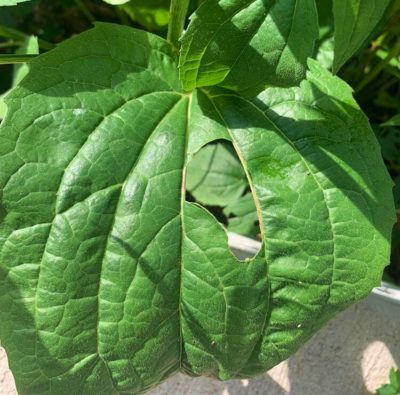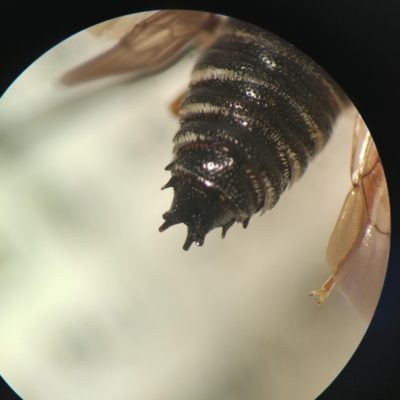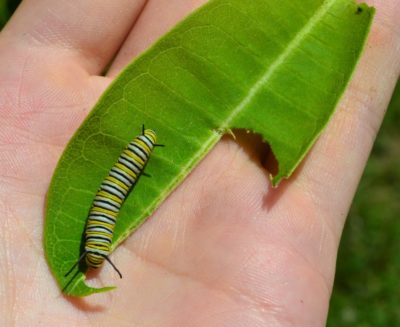Holes in Your Leaves? No Problem!

Growing up, I associated the presence of holes in plants to be a sign of destruction. I assumed that any plant littered with holes was debilitated and dying. Generally, when we imagine a healthy plant we picture it as green and lush with pristine leaves. But this isn’t always the case. Although plants can display an array of holes, rips, and blemishes, they can still be healthy.
Nature’s Artisans
This hole was engineered by a native Leafcutter bee. It is solitary, meaning it does not live within a colony. It gravitates towards large, wide leaves as materials to construct their nests. But no need to fret, these holes will not damage the plant’s overall health.

A Leafcutter bee will usually create a large gap similar to this one with clean edges. Under a microscope, Leafcutter bees have a serrated bum that can cut in a similar fashion to fancy craft scissors. This tool enables them to cut the most precise, intricate shapes they need to puzzle piece together their nest. They can even cut a perfect circle!
Leafcutter bees are master artisans by nature and utilize these scraps for their leafy cocoons. But leaf textures have to be just right. Not too thick and not too thin or they won’t make it into the nest.

But what are the other bite-sized bits out of other leaves in your garden? Various species of caterpillars rely on specific host plants in order to grow, form chrysalises, and become butterflies. If you’re growing parsley, dill, or fennel, you may be hosting the black swallowtail caterpillars! You can learn more about caterpillars and the plants they eat here.
These punctures will eventually grow over, and meanwhile, the bees and butterflies will pollinate the plants that sustained them. Holes, rips, and blemishes in plant leaves aren’t always a tell-tale sign of a bad bug. But, it is proof you have provided a haven for wildlife.
The next time you are scanning your garden, don’t be surprised if you notice some nibbles. Even if you can see straight through the plant, please don’t reach for the pesticides. Instead, thank your plants for giving life to the bugs that support our whole world!

Written by AmeriCorps Communications and Education Associate Rachel Hess. This is Rachel’s last Habitat at Home column before graduating AmeriCorps. Thank you, Rachel, for serving this year and teaching people about how to support all kinds of life in our gardens!